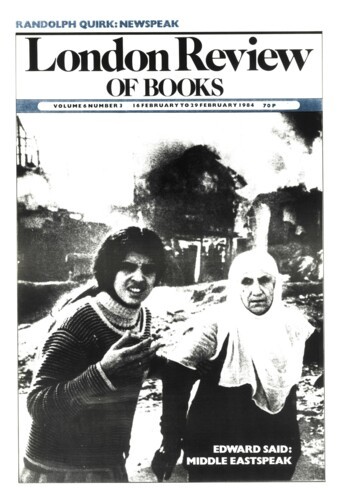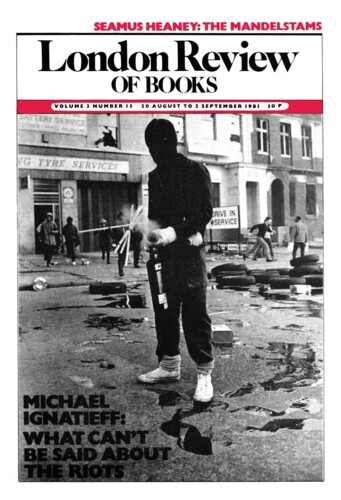Why Walk?
Ann Schlee, 16 February 1984
‘Why did you walk from Cajamara?’ Dervla Murphy is asked towards the end of Eight Feet in the Andes. ‘It is a long way and the roads are bad. It is possible to fly from Cajamara … to Cuzco. It is not necessary to walk.’ The speaker has hit upon a truth about modern travellers. They are not tracing a route from the known to the unknown. Their motives for travelling are varied and often oblique. Ms Murphy’s admission that ‘our treks are just playing at hardship’ in no way lessens the skill and satisfaction of her book. It records a journey with her nine-year-old daughter, Rachael, and a mule along the route taken by Pizarro in his conquest of Peru. Hardship is played to the hilt. Ms Murphy is a traveller in the classic style: moving at the pace of a beast, reliant for food on the land she passes through, entering so far as she is permitted into the lives of the peoples she meets. Her book takes the form of a journal, written up at the end of each day’s march. The immediacy of events is preserved. The wider issues of this ‘static, stylised, almost moribund culture’ are discussed as the day’s events draw them to her notice: the poverty and apathy of the sierra people and their sense of alienation from the central government, ‘the sloth and greed of the native Peruvian clergy’, the national inferiority complex, the cultural divide that causes one young man to say: ‘There is no room in Peru for two races whose minds have never met after 450 years of sharing the same country.’


